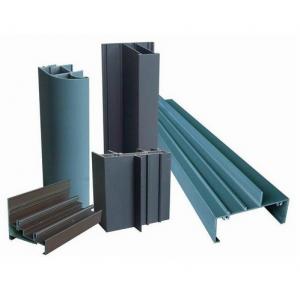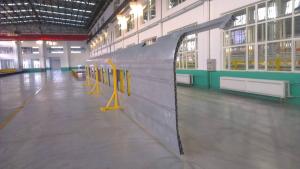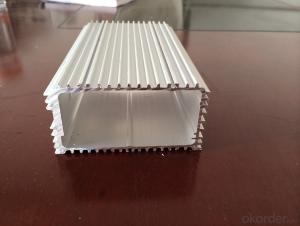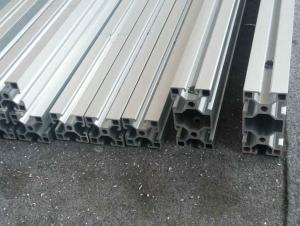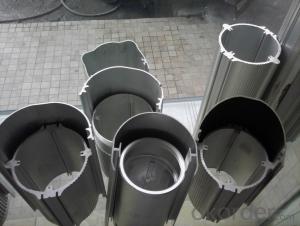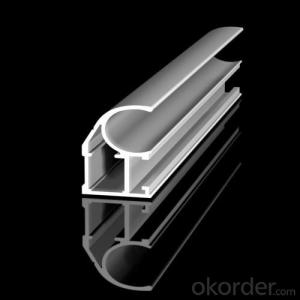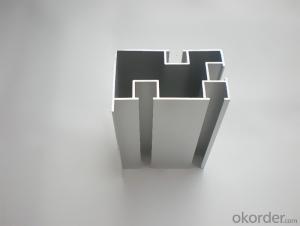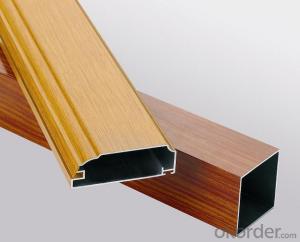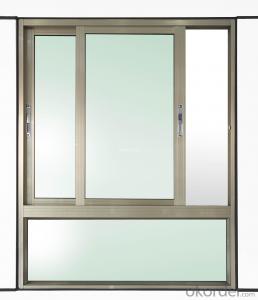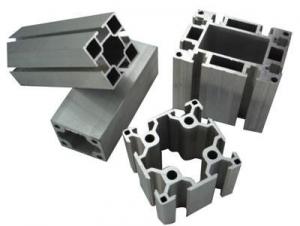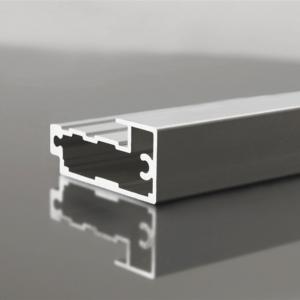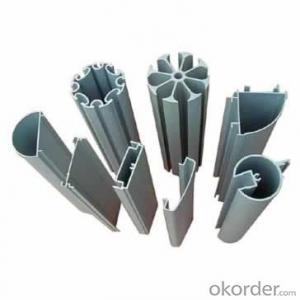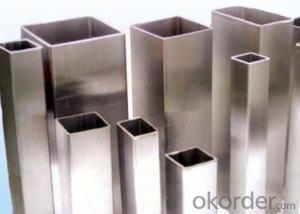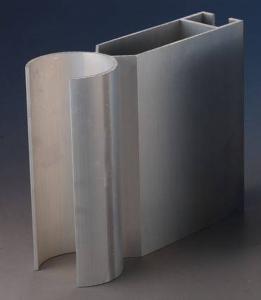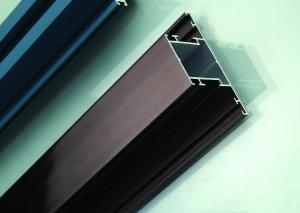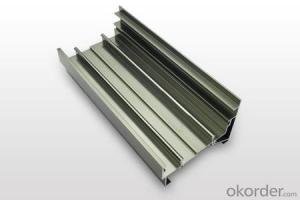Extruded Aluminum Enclosure Profiles - Curtain Wall Aluminium Profile AA6061
- Loading Port:
- China Main Port
- Payment Terms:
- TT OR LC
- Min Order Qty:
- -
- Supply Capability:
- -
OKorder Service Pledge
OKorder Financial Service
You Might Also Like
Powder Coating Aluminum door profile of - AA6060
1) Material : 6063 6061 6060 and different aluminium alloy
2) Alloy Temper: T4 T5 T6 or other special status as per customer's needing.
3) Optional Surface treatment: mill finish, anodized sliver ,anodized bronze, anodized champagne, anodized black pearl, various power coating color, electrophoretic sliver, electrophoretic champagne, electrophoretic golden,
electrophoretic titanium, machine polish sliver, machine polish bronze, wooden grain color, and Fluorocarbon spraying.
4) Annual capacity : 120000TON
5) Quality : China Nation Standard GB/T 5237 2004 (advanced class)
6) Application: can be widely used for aluminium window, door, curtain wall, hand railing ,
normal aluminium profiles, decoration and industrial aluminium profiles.
7) Advantage: Famous Brand reasonable&market price, soonest delivery and good after sale- service
- Q: What are the different fastening options available for aluminum profiles?
- There are several different fastening options available for aluminum profiles, depending on the specific application and desired functionality. Some common fastening options include: 1. Screws: Using screws is a widely used method to fasten aluminum profiles. They can be easily installed and provide a strong and secure connection. Self-tapping screws are often used, as they create their own threads in the aluminum profile. 2. Bolts and nuts: Bolts and nuts offer another reliable fastening option for aluminum profiles. They provide a strong connection and can be easily tightened or loosened as needed. It is important to select the appropriate bolt and nut size and ensure proper tightening to prevent stripping or loosening of the connection. 3. T-slot nuts: T-slot nuts are designed specifically for T-slot aluminum profiles, which have a groove along the length of the profile. T-slot nuts slide into the groove and can be easily positioned and tightened using a hex key. They provide a versatile and adjustable fastening option, allowing for easy repositioning or modification of the profile. 4. Clamps: Clamps are commonly used to secure aluminum profiles together or attach other components to the profile. They come in various designs, such as corner clamps or angle clamps, and provide a quick and easy way to assemble or disassemble aluminum structures. 5. Adhesives: Adhesives can be used to bond aluminum profiles together, offering a clean and seamless appearance. However, the strength of the bond may vary depending on the adhesive used and the surface preparation. It is essential to select an adhesive specifically designed for aluminum and follow the manufacturer's instructions for proper application. 6. Welding: Welding is a permanent fastening option for aluminum profiles. It involves melting the aluminum material and fusing it together, creating a strong and durable connection. However, welding requires specialized equipment and skills, making it a more complex and time-consuming process. It is important to consider the specific requirements of the application, such as load-bearing capacity, adjustability, or disassembly needs, when choosing the appropriate fastening option for aluminum profiles. Consulting with experts or manufacturers can help in selecting the most suitable fastening method for a particular project.
- Q: Are there any specific cleaning and maintenance instructions for aluminum profiles?
- Aluminum profiles require specific cleaning and maintenance instructions. Consider the following guidelines: 1. Ensure regular cleaning: To keep the appearance intact and prevent corrosion, it is necessary to clean aluminum profiles regularly. Utilize a mild soap or detergent mixed with water for surface cleaning. Steer clear of abrasive cleaners or steel wool, as they could potentially scratch the aluminum. 2. Steer clear of harsh chemicals: Harsh chemicals have the potential to harm the protective coating of aluminum profiles. Refrain from using strong acids, alkaline cleaners, or solvents for cleaning purposes. 3. Thorough rinsing: After cleaning, ensure that the aluminum profiles are rinsed thoroughly with clean water. This step eliminates any residue from the cleaning solution and prevents streaking. 4. Complete drying: After rinsing, dry the aluminum profiles thoroughly with a soft cloth or towel. Leaving moisture on the surface could result in corrosion, so ensuring the profiles are completely dry is crucial. 5. Lubrication: If the aluminum profiles possess moving parts or hinges, it is advisable to regularly lubricate them to ensure smooth operation. Use a lubricant specifically designed for aluminum to avoid any negative effects. 6. Protective coatings: Some aluminum profiles are equipped with protective coatings, such as anodized or powder-coated finishes. These coatings offer an additional layer of protection against corrosion and should be maintained according to the manufacturer's instructions. 7. Avoid abrasive cleaning tools: When cleaning aluminum profiles, it is important to avoid the use of abrasive cleaning tools such as brushes or scouring pads. These tools can scratch the surface and damage the protective coating. It is important to note that specific cleaning and maintenance instructions may differ based on the type and finish of the aluminum profiles. Thus, it is always advisable to refer to the manufacturer's guidelines for the most effective cleaning and maintenance practices for your specific aluminum profiles.
- Q: This question asks for a comparison of aluminum profiles with other materials regarding their weight and strength characteristics.
- <p>Aluminum profiles are known for their high strength-to-weight ratio, making them lighter than many other materials while maintaining significant strength. Compared to steel, aluminum is approximately one-third the weight but offers comparable strength, especially in alloy forms. When compared to plastics, aluminum profiles have greater rigidity and durability. They also resist corrosion and are more heat resistant than many plastics. However, aluminum profiles are generally more expensive than plastics and some steels. In summary, aluminum profiles offer a balance of low weight and high strength, making them suitable for applications where weight savings and structural integrity are crucial.</p>
- Q: What are the different tolerance levels for aluminum profiles?
- The tolerance levels for aluminum profiles can vary depending on the specific application and requirements. However, some common tolerance levels for aluminum profiles include dimensional tolerances, such as length, width, and thickness variations, as well as straightness, flatness, and surface finish tolerances. These tolerances ensure the desired precision and consistency in the manufacturing and assembly of aluminum profiles.
- Q: Are aluminum profiles suitable for awnings and canopies?
- Awnings and canopies find aluminum profiles to be exceptionally fitting. Aluminum, being a lightweight material, possesses durability and resistance to rust and corrosion, making it an ideal choice for outdoor purposes. Moreover, it allows for effortless customization in terms of shape and size. Furthermore, aluminum profiles can be powder-coated to further guard against the elements and augment their visual allure. In summary, aluminum profiles present a robust and adaptable solution for constructing awnings and canopies that endure diverse weather conditions while providing shade and safeguarding.
- Q: Is it possible to use aluminum profiles as materials for flooring?
- <p>Aluminum profiles can indeed be used for flooring materials, particularly in industrial or commercial settings. They are valued for their strength, durability, and resistance to corrosion. Aluminum profiles are often used in modular flooring systems, providing a stable and customizable base that can be easily adjusted or reconfigured. They are also appreciated for their lightweight nature, which can reduce the load on structures and facilitate installation. However, for residential applications, traditional flooring materials like wood, tile, or carpet are more common due to aesthetic and comfort considerations.</p>
- Q: Can aluminum profiles be used in the production of food processing equipment?
- Yes, aluminum profiles can be used in the production of food processing equipment. Aluminum is a lightweight and versatile material that offers several advantages for this application. It is non-toxic and non-corrosive, making it suitable for use in food processing environments where hygiene is crucial. Aluminum profiles can be easily cleaned, have a high resistance to chemicals, and are not affected by moisture or humidity. Additionally, aluminum is a good conductor of heat, which is important for efficient food processing. It also has excellent structural strength and can be easily fabricated to create customized equipment. Overall, aluminum profiles are a popular choice in the food processing industry due to their durability, versatility, and hygienic properties.
- Q: Can aluminum profiles be used in railway and transportation infrastructure?
- Yes, aluminum profiles can be used in railway and transportation infrastructure. Aluminum is a lightweight and durable material that offers excellent strength-to-weight ratio, corrosion resistance, and easy fabrication. It can be used in the construction of train bodies, windows, doors, and various structural components. Additionally, aluminum profiles are recyclable, making them environmentally friendly and cost-effective for transportation projects.
- Q: Which price is expensive for aluminum profiles 6063-T6 and 6063-T5?
- 2.1 first digit: indicates the main addition of alloying elements.1: pure aluminum2: mainly adds alloy element to copper3: mainly adds alloying elements manganese or manganese and magnesium4: mainly adds alloy element to silicon5: mainly adds alloying elements to magnesium6: mainly adds alloy elements to silicon and magnesiumThe main additions of 7: alloy elements are zinc and magnesium8: does not belong to the new alloy
- Q: This question asks if aluminum profiles can be utilized in the construction of environmentally friendly buildings.
- <p>Yes, aluminum profiles can be used for green building applications. They are valued for their durability, recyclability, and energy efficiency. Aluminum is lightweight, which reduces the building's carbon footprint during transportation. It also has excellent thermal conductivity, allowing for better insulation and energy conservation. Additionally, aluminum can be recycled without losing its properties, contributing to a circular economy and reducing waste. These characteristics make aluminum profiles suitable for sustainable construction practices.</p>
Send your message to us
Extruded Aluminum Enclosure Profiles - Curtain Wall Aluminium Profile AA6061
- Loading Port:
- China Main Port
- Payment Terms:
- TT OR LC
- Min Order Qty:
- -
- Supply Capability:
- -
OKorder Service Pledge
OKorder Financial Service
Similar products
Hot products
Hot Searches
Related keywords

